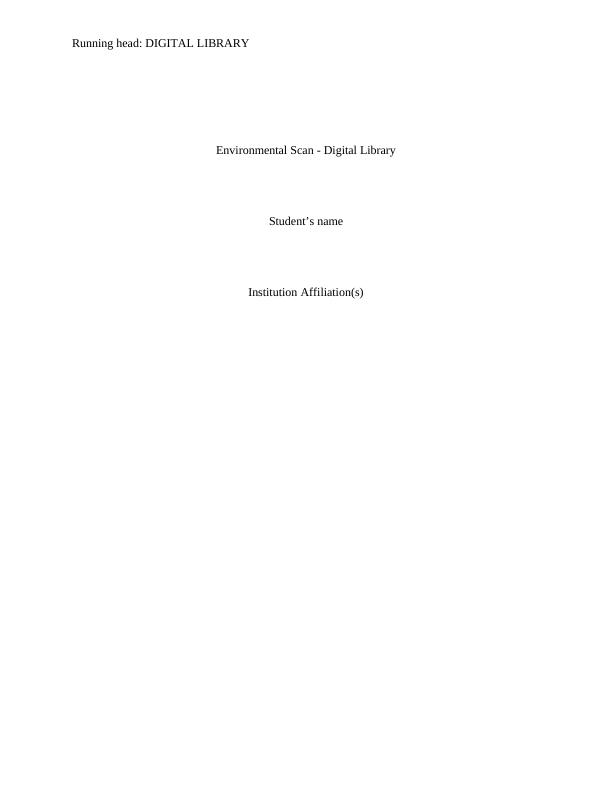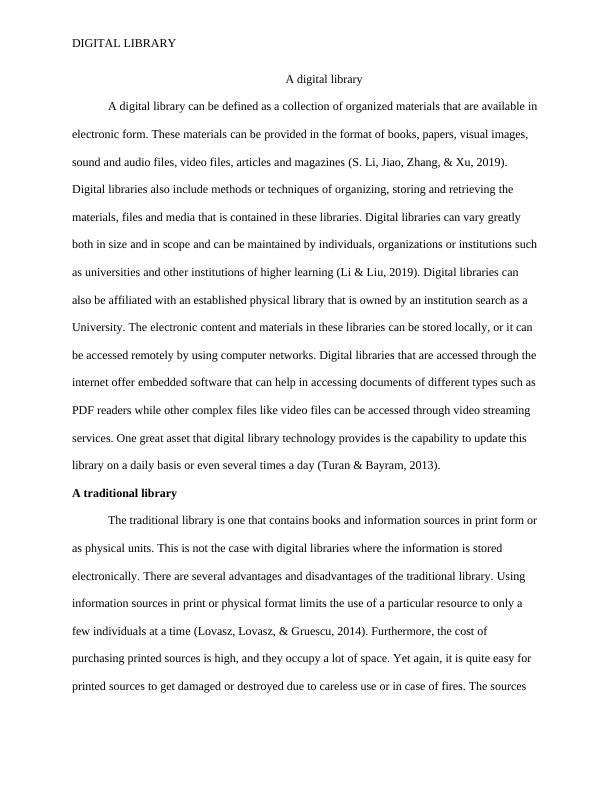Digital Library: Advantages, Disadvantages, and Future
Conduct an environmental scan of a key topic in digital libraries and apply the findings to an existing digital library project.
7 Pages1694 Words47 Views
Added on 2023-03-17
About This Document
This article discusses the concept of a digital library, its advantages and disadvantages compared to traditional libraries, and the future of digital library technology. It explores the accessibility, storage, and preservation benefits of digital libraries, as well as the issues of copyright and pricing. The article also highlights the potential of digital libraries to overcome limitations of physical libraries and enable distance learning. Overall, it provides a comprehensive overview of the digital library landscape.
Digital Library: Advantages, Disadvantages, and Future
Conduct an environmental scan of a key topic in digital libraries and apply the findings to an existing digital library project.
Added on 2023-03-17
ShareRelated Documents
End of preview
Want to access all the pages? Upload your documents or become a member.
EFFECTS OF INTERNET TECHNOLOGIES ON BOOKS
|8
|2519
|326
Digital Literacy and the Impact of Google on Reading Culture
|4
|822
|307
Digital Library: Advantages, Challenges, and Impact
|12
|2659
|138
Study Skills for Higher Education
|12
|3894
|47
DO WE STILL NEED LIBRARIES
|7
|1751
|23
Environmental Scan: Digital Libraries
|10
|2565
|188



